Cooler Master MasterWatt Maker 1200 PSU Review
Cooler Master finally released its MasterWatt Maker PSU, which was designed for true enthusiasts. Sporting Titanium-class efficiency, a digital interface, and other exotic features, we didn't expect an affordable price. But $450 looks insane!
Why you can trust Tom's Hardware
Transient Response Tests
Advanced Transient Response Tests
For details on our transient response testing, please click here.
Ιn these tests, we monitor the PSU's response in two different scenarios. First, a transient load (10A at +12V, 5A at 5V, 5A at 3.3V and 0.5A at 5VSB) is applied for 200ms while the PSU works at 20 percent load. In the second scenario, the MasterWatt Maker 1200 is hit by the same transient load while operating at 50 percent load. In both tests, we use our oscilloscope to measure the voltage drops caused by the transient load. The voltages should remain within the ATX specification's regulation limits.
These tests are crucial because they simulate the transient loads a PSU is likely to handle (such as booting a RAID array or an instant 100 percent load of CPU/GPUs). We call these tests "Advanced Transient Response Tests," and they are designed to be very tough to master, especially for a PSU with a capacity of less than 500W.
Advanced Transient Response at 20 Percent
| Voltage | Before | After | Change | Pass/Fail |
|---|---|---|---|---|
| 12V | 12.073V | 12.012V | 0.51% | Pass |
| 5V | 5.069V | 4.921V | 2.92% | Pass |
| 3.3V | 3.337V | 3.175V | 4.85% | Pass |
| 5VSB | 5.008V | 4.942V | 1.32% | Pass |
Advanced Transient Response at 50 Percent
| Voltage | Before | After | Change | Pass/Fail |
|---|---|---|---|---|
| 12V | 12.027V | 11.970V | 0.47% | Pass |
| 5V | 5.020V | 4.879V | 2.81% | Pass |
| 3.3V | 3.309V | 3.155V | 4.65% | Pass |
| 5VSB | 4.933V | 4.828V | 2.13% | Pass |
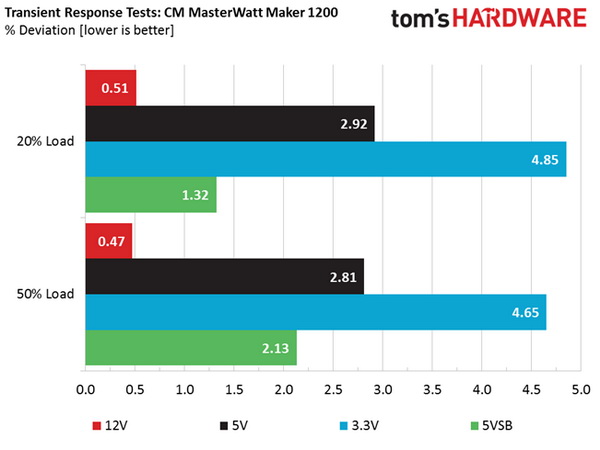
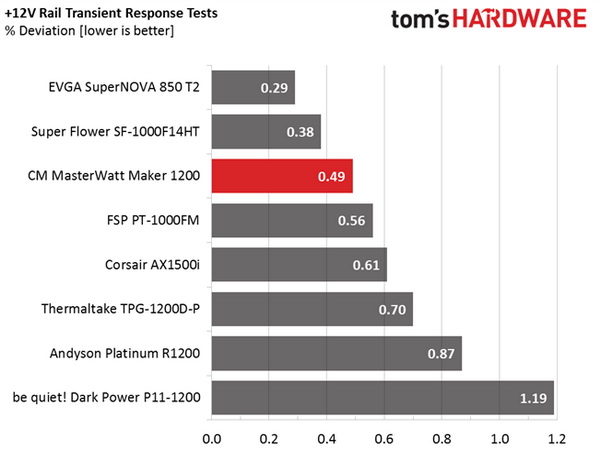
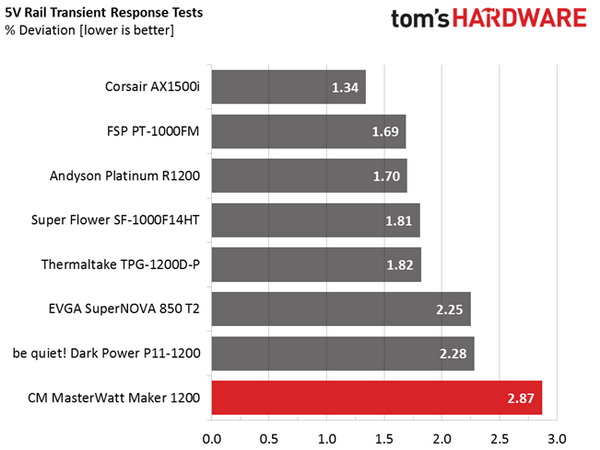

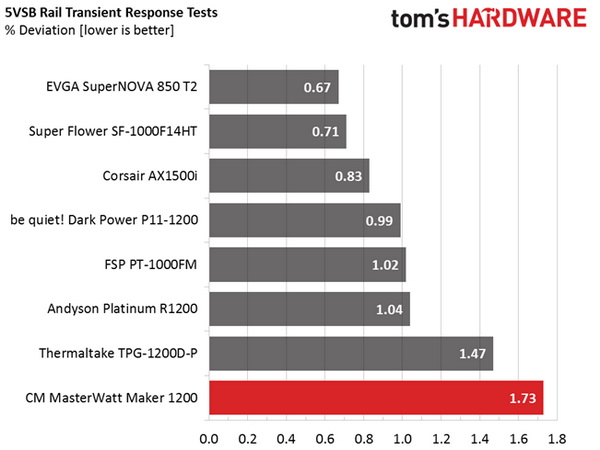
The +12V rail's response is amazing in these tests. We can't say the same for the other rails, though. The 3.3V rail's performance is especially disappointing.
Here are the oscilloscope screenshots we took during Advanced Transient Response Testing:
Transient Response At 20 Percent Load

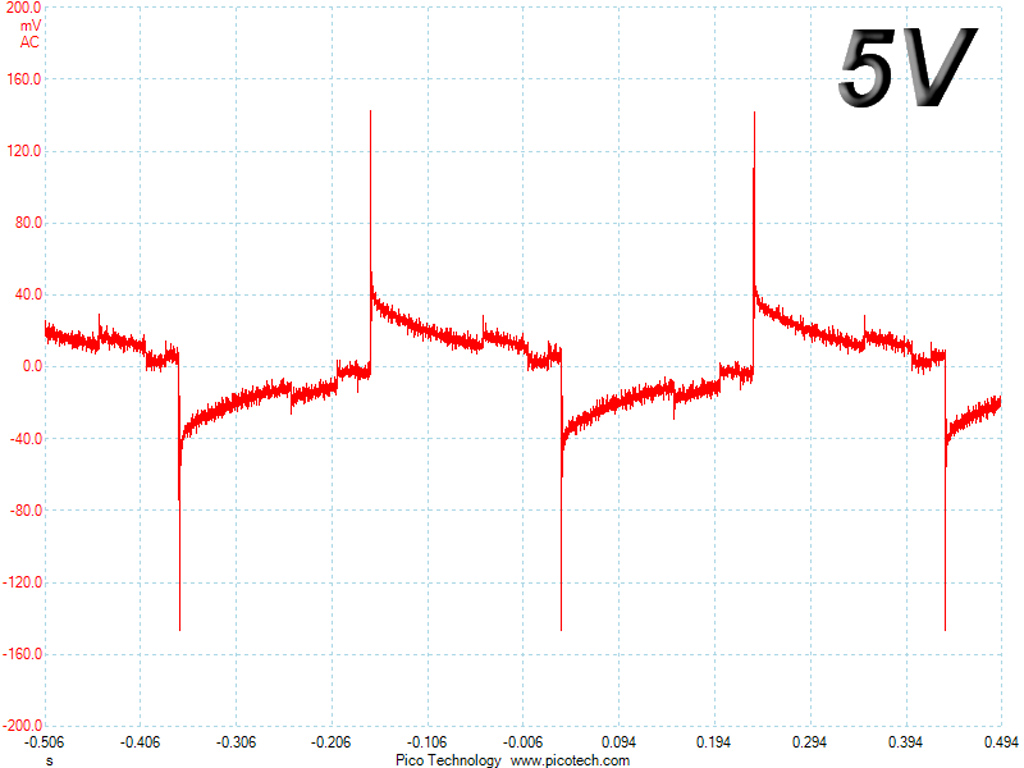

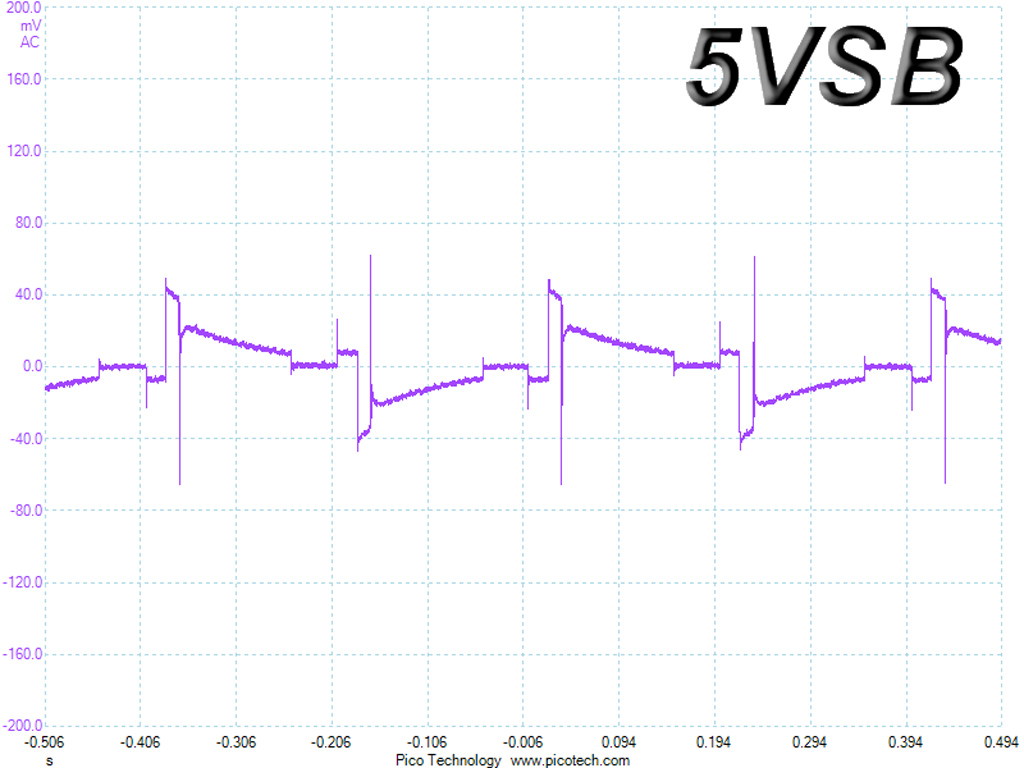
Transient Response At 50 Percent Load
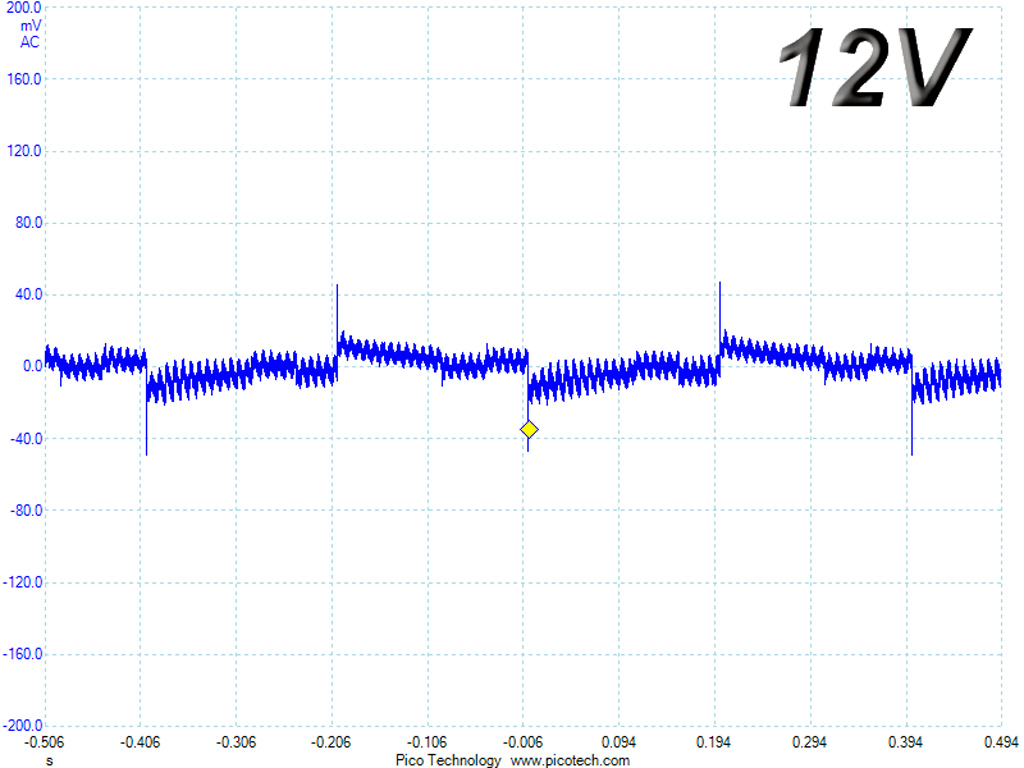
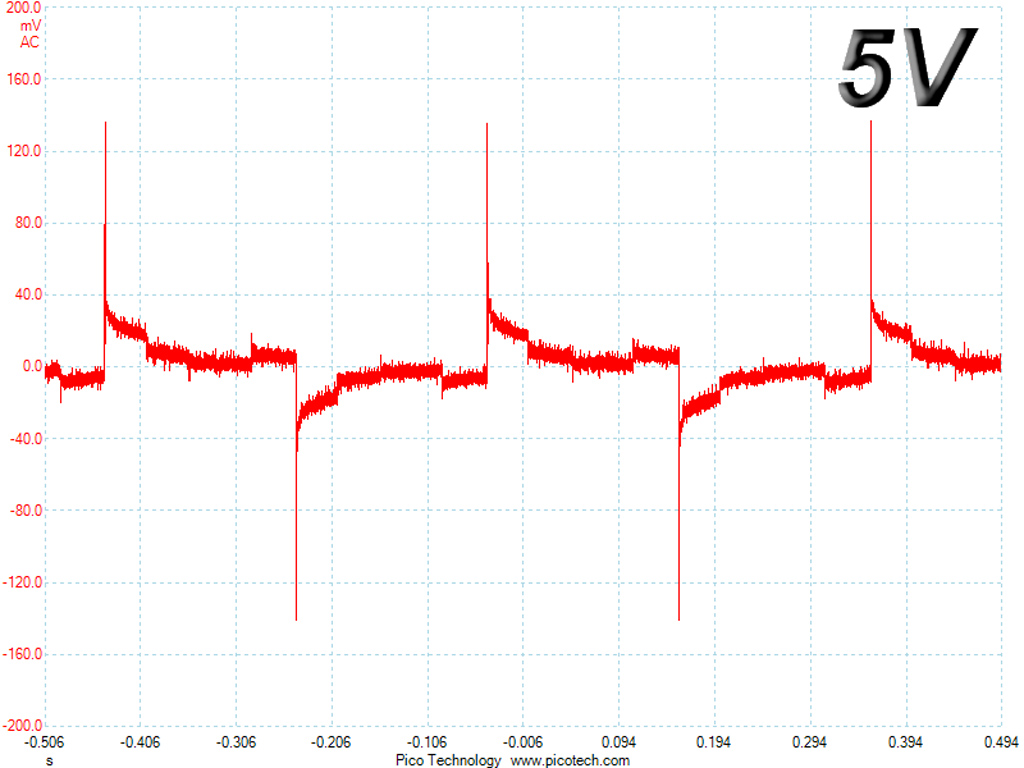
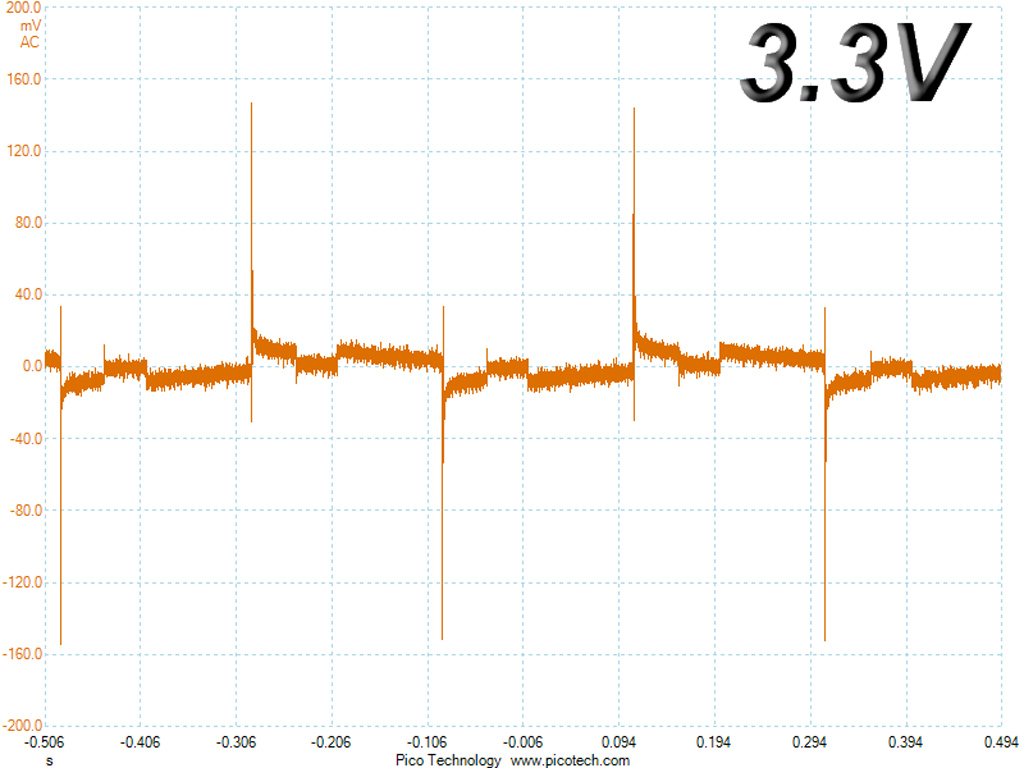
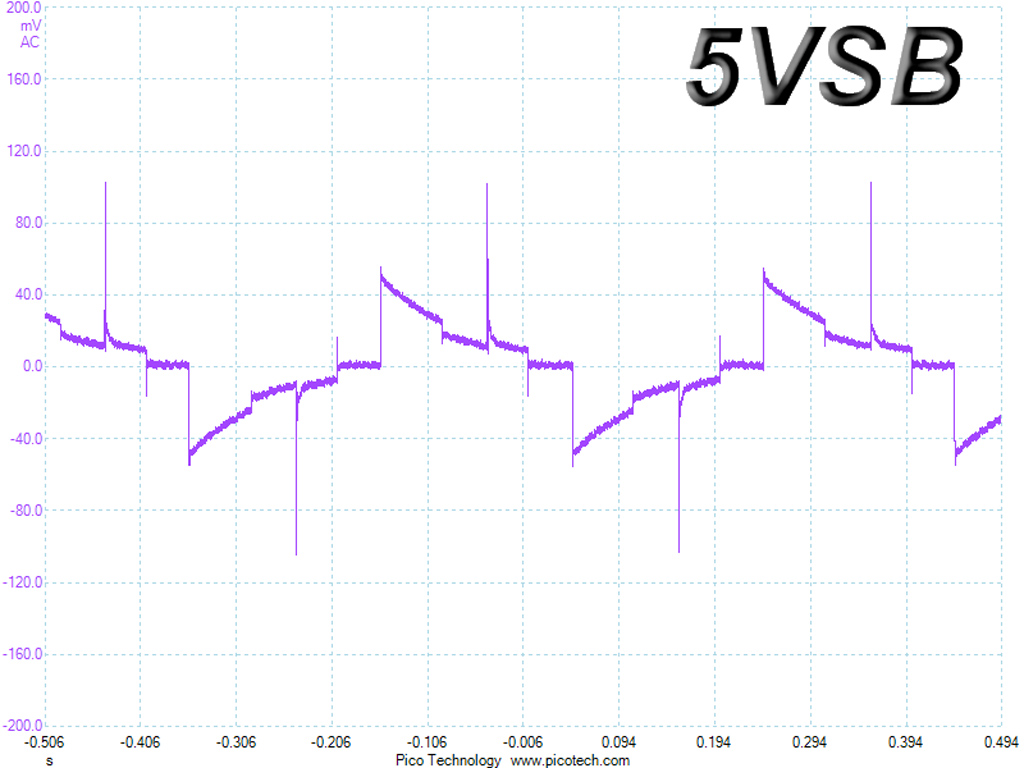
Turn-On Transient Tests
In the next set of tests, we measured the PSU's response in simpler transient load scenarios—during its power-on phase.
For the first measurement, we turned off the PSU, dialed in the maximum current the 5VSB could output, and switched the PSU on. In the second test, we dialed the maximum load the +12V could handle and started the PSU while it was in standby mode. In the last test, while the PSU was completely switched off (we cut the power or flipped the power supply's on/off switch), we dialed the maximum load the +12V rail could handle before switching the PSU on from the loader and restoring power. The ATX specification states that recorded spikes on all rails should not exceed 10 percent of their nominal values (+10 percent for 12V is 13.2V, and 5.5V for 5V).
Get Tom's Hardware's best news and in-depth reviews, straight to your inbox.
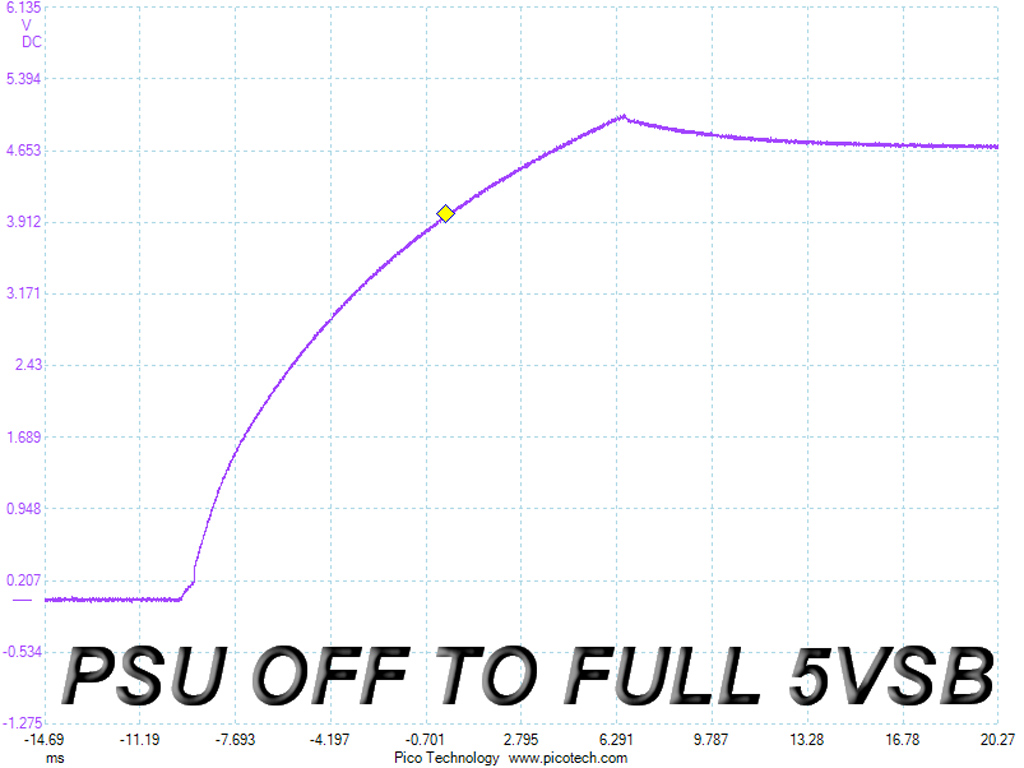
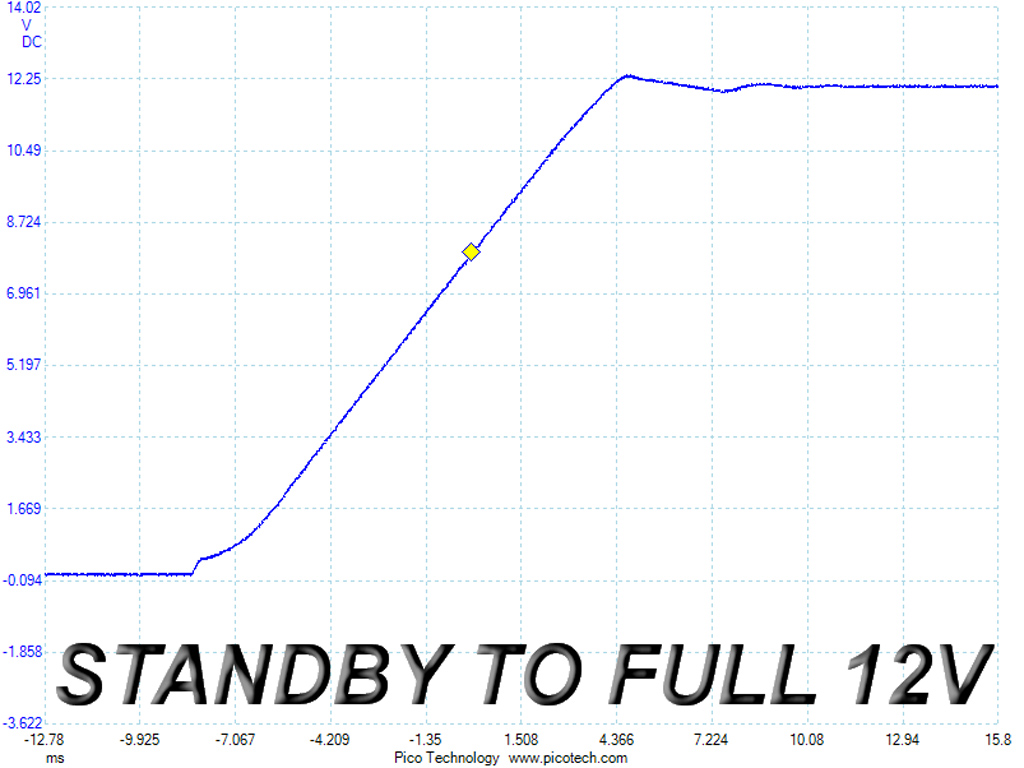
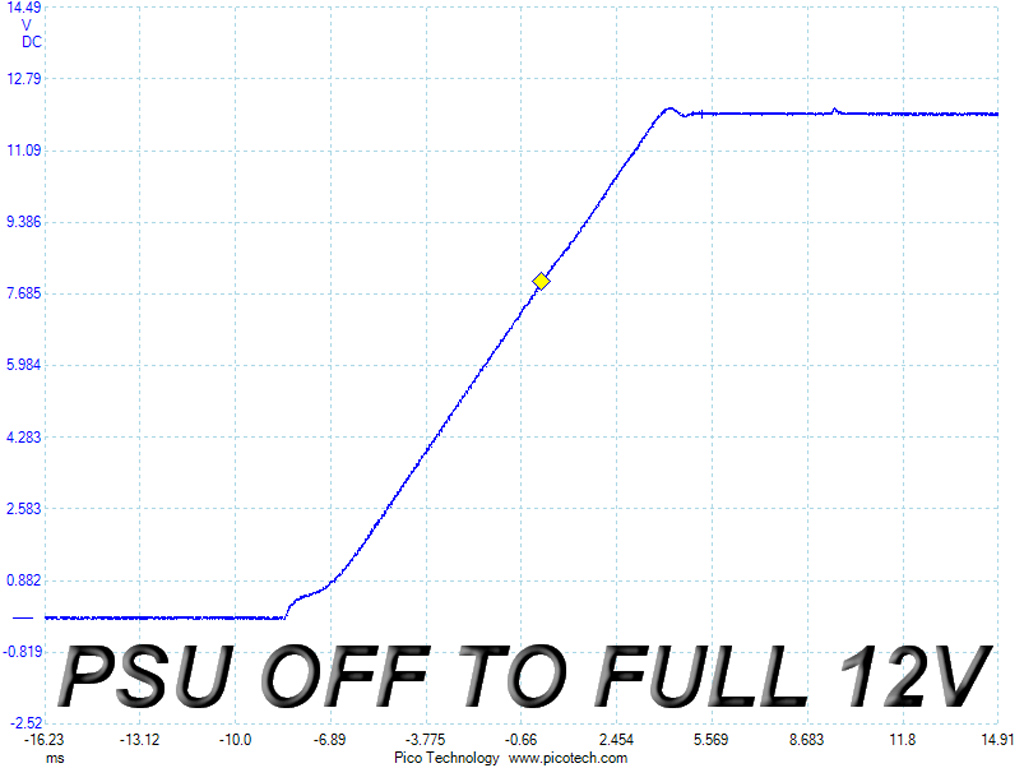
We noticed a small voltage spike at 5VSB, and some very small bumps before the +12V rails settle down. In general, the performance here is pretty good.
Current page: Transient Response Tests
Prev Page Cross-Load Tests And Infrared Images Next Page Ripple Measurements
Aris Mpitziopoulos is a contributing editor at Tom's Hardware, covering PSUs.